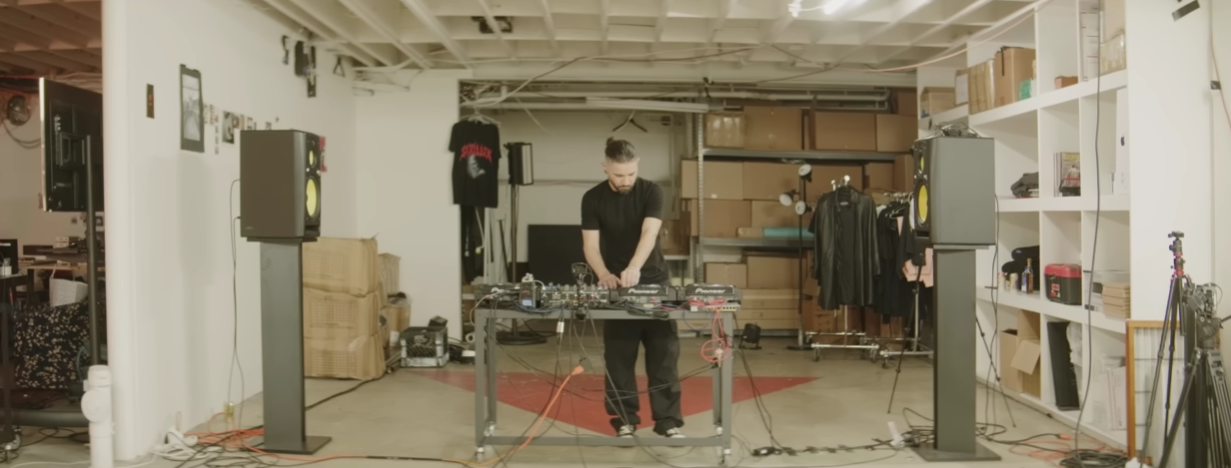What Are Bootleg Remixes?
What We'll Cover
- How to remix a song like a boss
- A quick history of remixing
- The remix you want to make?
- What makes a great remix?
- Is remixing a song legal or illegal?
- Do i need to get the permission of the original artist to remix a song?
- How do i get permission to post my remix?
- What can i do if i don’t get permission?
- Definitions
- Prepare your remix
- What are stems?
- Where to find your stems
- What do i need to know about remix competitions?
- Getting started
- Start planning your remix
- Get in your element, find your space
- Chop and slice away
- Build your arrangement
- Be flexible with your views
- Layout your arrangement
- Be faithful to the original
- Use parts of the original song
- Deadlines are your friend
- Rinse and repeat for life
If you’re already into the remixing scene, you’ve probably heard the term ‘bootleg,’ which is the industry term for an illegal remix. This simply means that the remixer has created a remix without getting permission from the original artist.
It’s important to note that while bootleg remixes are popular, they are still illegal to distribute and redistribute. However, the questionable legal status of such tracks doesn’t stop people from creating or distributing them. Indeed, a lot of great remixes over the years have been bootlegs!
You might decide that getting permission is too tricky and remix anyway, and then decide that the world needs to hear your bootleg. While the police are unlikely to kick your door down, you must tag your song as a bootleg so that others know that your track is a bootleg one and that sharing it is risky – after all, wouldn’t you appreciate the same warning?
How to remix a song like a boss
If you’ve been following this guide, then you should have completed your preparations and have all your legal stems ready to get started. Enough talk – lect’s get to the meat and talk about how you can start to remix your songs like a pro!
A quick history of remixing
This article is a comprehensive guide to all things remixing, whether you’re just starting out or looking to become the next all-time great when it comes to remix competitions.
First, you’ll learn what makes for a good remix and what you need to consider before opening your music production software. Next, we’ll show you where you can find remix competitions and how to get stems for your remixes. Finally, we’ll not only show you how you can remix a song with a step-by-step video tutorial – but we’ll also give you the free samples and stems to follow along and practice with!
So, shall we get started?
The evolution of electronic music is a tale of samples, remixes, and constant re-editing. It’s a world born from the endless creativity of DJs around the world seeking to stretch out records, create longer percussion sections, and stamp their own mark on a tune.
At least, that’s what the books say.
The truth is much bigger than that. It’s a story that starts on the disco-fueled dancefloors of the 1970s, a time when electronic music was in its infancy, emerging onto the scene. The music was wild, the people wilder – and everyone was hungry for the dancefloor’s energy.
As DJs sought to mold that energy in the clubs, the remixing scene was born. Throughout the 70s up to the 90s, remixing grew, fueled by adrenaline-driven hip-hop and house tracks blasting out of stereos everywhere.
Today?
It’s everywhere, as technology makes it possible for anyone to create their own remixes. It doesn’t matter what genre the music is. Everyone has their own unique style to imprint on a remix, just as every DJ is focused on creating the ultimate vibe for the people in the room on any given night.
It’s what keeps people coming back: the combination of a thousand and one small things. The music. The beats. The Lights. The energy. The crowd. Get it right, and you can create a moment of blissful musical euphoria where everyone is connected. God is a DJ, after all – and when the DJ mind melds with the crowd, a remix can transcend reality to create an indelible imprint in your mind of that moment.
Do you love the breaks in tracks where everything drops out, just leaving the thumping heartbeat of the percussion? Thank Francis Grasso’s pioneering DJing nights in New York’s Sanctuary club back in the 70s. The crowd went wild the first time – and still does. Following Grasso are some of the big names of the 1980s: David Mancuso, Steve D’Acquisto, Frankie Knuckles, or Larry Levan, building on the energy of percussive breaks and introducing techniques that vamps, the precursor for today’s ubiquitous loops.
It wasn’t just the nightclub DJs; hip-hop DJs were all about the remix, too, right from the beginnings of this genre. They understood that there was only one rule in the game: don’t let people leave the dancefloor. They couldn’t force people to keep dancing, but they could juggle breaks like old masters, creating long reel-to-reel edits where the beat never stopped and the feet couldn’t stop. Plus, with a little editing, you could copy and play a single perfect moment, over and over again – whether live or over the waves.
The remix you want to make?
It’s a part of this cultural heritage. Not all songs are built for the dancefloor… but with an infectious remix, anyone with anything can get people on the dancefloor to chase that moment of euphoria.
What makes a great remix?
Anyone can throw together music to make a remix – but making a good remix that other people will enjoy requires a little thinking and finesse.
The good news is that there’s no one answer to the question of what makes a remix good; after all, music is a question of personal taste! This gives you plenty of artistic freedom, but there are some general remixing standards that you should remember when creating your track.
A remix is a new, unique take on the original song that inspires it. For some people, that might mean switching up the beat to change the mood of a song and introduce listeners to a whole new vibe hiding in the original all along.
For other people, it might mean adding vocal chops and powerful chord stacks at the drop, laying on the bass thick. For yet more people, it might be taking a song and transforming it, taking it in a surprising new direction.
It doesn’t matter what your unique take on the song is, so long as it is always recognizable as the song. This is primarily done through keeping the vocals intact as well as being a fit with the original.
If you’re just starting out, always consider the main musical idea of any song and how your take on it slots into that song’s universe. This will help you to create a coherent remix while showcasing your creative mixing abilities.
Is remixing a song legal or illegal?
This is one of the biggest questions everyone has when starting out! Unfortunately, there’s no single answer here, making this a thorny topic to approach from a generalist point of view.
The most straightforward and best advice anyone can give is that while people can pick any song they want to remix, publishing it online after you’re done without permission is not a good idea.
Note that the key word here is permission – which we’ll explain in the next section.
Do i need to get the permission of the original artist to remix a song?
Permission is king when it comes to posting your remix, so the only answer you should accept to this question is a yes –, and it should ideally be written permission, although if a sample or song is public domain or the artists has given open permission directly, you will already have the permission. Check the small print!
This includes full remixes or remixes where you use a section of a song that listeners can identify – and yes, that includes those ‘blink, and you’ll miss it’ sections, too.
You might think that posting your song to a site like YouTube or SoundCloud for free will exempt you from requesting permission. Still, according to the law, you are redistributing another artist’s music (even as a tiny sample), which can land you in hot water if everything goes Pete Tong.
In short, always get written permission from the artists whose songs you are remixing and sampling to stay on the right side of the law (and to avoid messy disputes with other artists).
How do i get permission to post my remix?
You may be wondering how you’re going to get permission for your remix, especially if you’re planning on using a lot of samples from artists who aren’t easy to contact. Luckily, there are easy ways to get permission.
Open public remix competitions and freely available stems are the easiest way to get your hands on the source materials for remixes and are a great place to start. If you have more specific samples in mind and they come from small artists or smaller record labels, then you can also contact them directly to ask permission.
If you’re looking to remix a song published on a major label, then you will find a lot more roadblocks in your way. The big record labels are highly protective of their catalogs – and are the most likely to take legal action in protecting their work.
What can i do if i don’t get permission?
Sometimes, it happens. You’ve searched high and low across the internet for samples and initiated contact with the original artists to no response – or a flat out ‘no.’ This is dispiriting, especially when you realize that your remix idea can never legally be published or distributed.
However, there’s nothing to stop you from doing just that; the chances of somebody taking legal action against you are low. While the legal consequences shouldn’t keep you awake at night, you should be aware that there are lesser potential consequences.
The most noticeable consequences for remixers come from distributing their bootlegs on sites like YouTube and SoundCloud. While these are fantastic places to share your work, they do come with copyright flagging systems – violate these one too many times, and you can kiss your account goodbye.
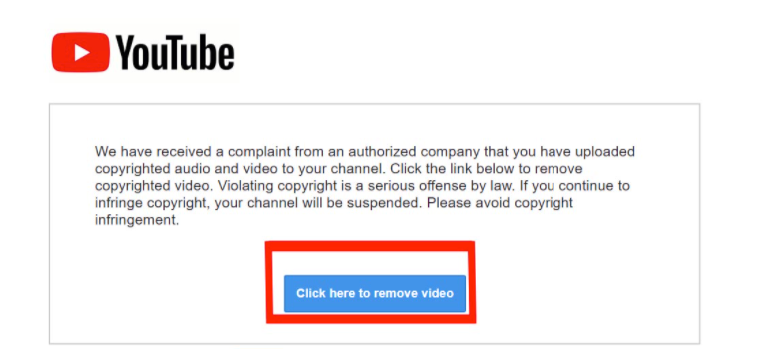
This process is all done automatically with software that can instantly recognize copyright samples then remove your track. If you’re lucky, it may sometimes miss tracks, but consider carefully if this is a risk you want to take, especially if you’re trying to build up a following.
Congratulations – you’ve reached the end of the legal system. Now it’s time to get to the real fun of remixing!
Definitions
Of course, remixes aren’t just about the dancefloor. They’re an amazing way for the aspiring producer to start your first steps on your journey to greatness. After all, the track’s already laid, and you don’t need to start at the very beginning.
Instead, you’re starting with something that already exists and gives you something you can work with. It’s a way to start making a name for yourself – hop on today’s biggest hits and stamp your own groove on it. People who get your bootleg vibe will find you, giving you the audience and recognition you seek.
But before we go any further, you need to know exactly what some of the most common terms for remixing are:
- Bootleg: Unofficial, underground, very likely illegal, and made with no real permission from the artist, a bootleg is a remix that’s down and dirty, usually created by DJs who want an alternative show version. For beginners, they’re a lot of fun and a great way to get into your local production and club scene – just remember, it’s illegal to sell bootlegs
- Remix: Made from the original recording of a song with separate audio parts, producers can change up every part of a song, maximizing their ability to get creative. In the case of official remixes, the original artist – or their record label – pays creators to do just this
- Re-edit: Made from the finished full recording, rather than the audio parts. Typically, these are rearrangements designed for the dancefloor, usually done through cutting and pasting segments, extending sections for the breakdown, and removing or shrinking others
- Flip: Back in the days of vinyl, the A-side featured the main track and the B-side (or ‘flipside’) the second. Remixes can be called flips since this is where you might find them
- Rework: Got an interpretation of a song that doesn’t really fit into any of the other categories here? Just use the term rework… unless you’ve got a bootleg!
- VIP Mix: This simply means the original artist has remixed their own song or created a ‘Variation in Production’ for the original track
There’s no denying that there is plenty of room for overlap here, and the boundaries aren’t as clear cut as these definitions might suggest. When in doubt, just call it a rework. Otherwise, it’s your turn to start creating audio scapes without limitation.
Prepare your remix
Are you ready to make a remix (not a bootleg?). Then you’re going to need to get your stems ready. No, we’re not talking about gardening here!
What are stems?
Stems are the constituent parts of a song; when artists create a song track, everything is given its own stem. For example, you might have a stem for vocals, a stem for drums, a stem for guitar, and a stem for bass. They look a bit like this in music production software:
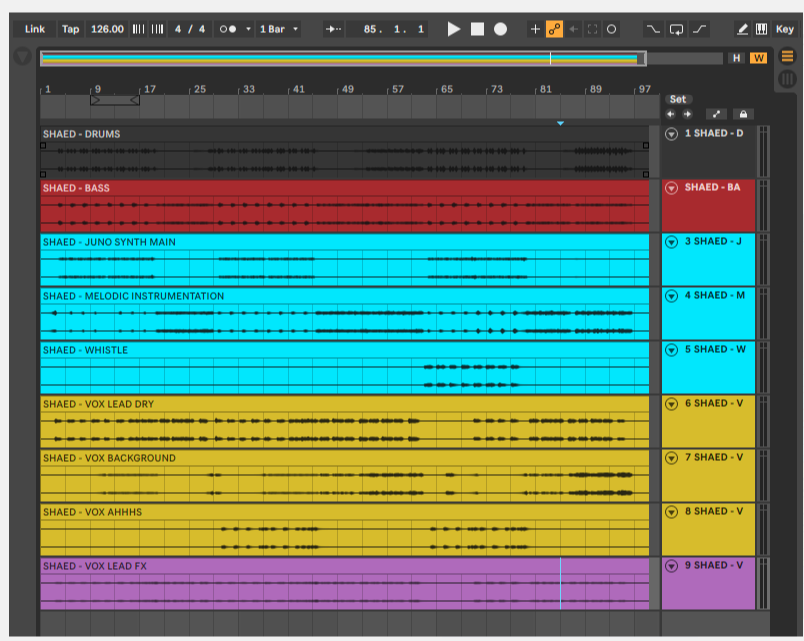
Obviously, the more complex a song, the more stems that come with it. For the aspiring remixer, stems are a gift, giving you every note of a song isolated in its own track – another good reason to get permission from the original artist is that they will usually give you the stem track!
While some songs are broken down into instrument categories only, others may go down to even more fine details, giving you complete control over the tiniest elements in a song. No matter what type of stems you get, your remix will benefit from the considerable flexibility they offer when making decisions about where you want your remix to go.
Where to find your stems
Stems are available from a wealth of sources. Most of the time, you’ll find them in sample packs, DJ pools, and, of course, remix competitions, with active remix competitions being the best source for legal stems.
Most remixers go to websites like Spice and Loopmasters to find their sample packs. Both sites offer a massive choice of packs with just about every sample you can think of, from full licks, vocal phrases, and chops. It’s worth spending time digging around here, as you may find everything you need to get a full set of lyrics legally remixed. These sites provide legal samples, so you can just jump straight into it.
DJ pools are another excellent place to search for your stems, with the most popular today being DJ City, BPM Supreme, and Acapellas4U. Here, you’ll find a rich resource packed with vocal and track stems ready to be used in your remix. However, a word of caution: not everything on these sites comes with permissions, leaving you open to copyright infringement – do your due diligence before downloading!
What do i need to know about remix competitions?
You’ve already seen the term’ remix competition’ used a few times in this article, and by now you may be wondering exactly what these are. They’re simply a challenge to producers put out by the original artist or label to create an awesome remix of a track.

There are hundreds of places where you can join remix competitions, each with their own advantages and disadvantages. Today, there are three sites in particular that remixers gravitate toward:
- Wavo.me: the home of big, mainstream competitions where you’ll find major record labels launching competitions
- Splice: a popular place to pick up sample packs, Splice also hosts beat challenges and remix competitions
- SKIOmusic.com: the meeting place for people who gravitate toward a more underground style of remix and competition
The beauty of these competitions is that you’ll be provided with the stems with permission to publish your version online. It’s a win-win for both you and the original artist, as you get to showcase your work to the world. In contrast, the original artist gets exposure to a new audience and even new genres.
Typically, these remix competitions are open for a limited window of time. During that time, anyone can enter the competition and submit their remixes. As entries come in, people vote for their favorite. A judge – usually a panel involving the label and artist – will pick the winner at the end, often giving out a prize.
As you might suspect, the real prize isn’t the one listed in the competition: it’s the opportunity to make your name, spread your music, find support, boost your fanbase, and gather new opportunities at events. Even if you don’t win, the extra exposure is a boost to your career.
Just how do you start with a remix anyway? The good news is also the bad news: there are hundreds, if not thousands of ways you can create a remix. As a producer, you’ve got the power to do anything you want…
…Which can make things tough if you don’t know where to start.
With that said, there are some general steps and techniques that producers use to create their remixes. Adopting these won’t just help you to get started, but also to create good production habits as you develop and grow your skills.
Getting started
Get your audio source materials
The first step is simply to pick up a track you like and use it. Sure, you can pick a track you don’t like. Still, remixes are an exercise in creative imagination – and if you’re looking for inspiration, it’ll come a lot easier if the source material is your jam.
If you’re making a true remix – say, you want to join official remix competitions – you need to find the stems for the source track (stems is the industry term for the individual, isolated audio tracks of any recording). If you’re seeking out stems only, then native instrument stems are a great place to start, letting you interact with every musical element independently. If you’ve got good relations with any producers, ask them for their stems – they will likely share them with you!
If you’re just editing a song, then all you need to do is find a high-quality recording. That could be from a CD, FLAC, WAV, or similar. The file format doesn’t matter as much as the quality; the higher the quality, the better.
An excellent place to start looking for source material is splice.com, a free cloud service that offers access to samples, runs competitions, and even lets you upload your work, all with one simple subscription.
Start planning your remix
You’ve got your source audio – now it’s time to work out what key the audio is in and its BPM. This should be provided with the files, but if it isn’t, then there are some excellent resources that can help you find out in a few clicks. We use Beatport and Mixed In Key – Mac users can also access Keyfinder, an open-source and hyper-effective tool.
If you’ve got musical ears and working knowledge of music theory, then you can simply transpose the music yourself; this will take more time, but it will give you a closer relationship and musical understanding of the track you’re working on.
The next step is to open up your music production software – Ableton is a great tool – and load your stems: make sure everything is lined up correctly! You can do this easily in the arrangement view. With everything loaded up, you can now listen to the audio in full to get a feel for the song.
This is the time to unleash your creativity. As an artist, what do you think would make this track better? Write down everything, listen to the track again, and start forming your angle.
This is the time to form your own musical direction and decide where you’re taking this, what you’re going to leave on the cutting floor, and what you will expand or contract.
There are no real rules here, other than just creating something that sounds dope, so don’t restrict yourself creatively. You’re the boss! Sometimes, you might find yourself lost – that’s fine and a part of this process. Just go back to your notes and planning to find your feet again.
Whatever you do, don’t skip the notes or the plan – these are crucial to taking your work over the finish line and keeping your artistic vision intact.
“Guys, I can’t find the right sound for my awesome remix – help!”
No sweat, we’ve got your back – check out freesounds.com today and get your hands on inspirational, copyright-free sounds to cover all your needs… also, it’s 100% free!
Get in your element, find your space
By this point, you should know your track by heart – but we’re not stopping there. It’s time to listen to everything stem by stem. This can be tedious, but it’s essential. We’re looking for two things here:
- Find inspiring moments and create location points for them (pro-tip: makes your life easier later on)
- Find spaces in the overall music where you can add your own elements and stamp your unique style on a track
You’re going to want to make notes here, too. Once you’ve done all this, you can finally move onto the part of music production that everyone loves: chopping and slicing.
Chop and slice away
Here’s where the magic really happens (although in truth, so much of that magic is the hard work of preparation outlined in the above steps). You’re in your domain now, and you can decide exactly what to do next.
You’ll want to delete any audio material you know you’re not going to use and keep the good stuff that gets you inspired. At this point, you should also color code and rename each individual track, so you know what everything is. For example, a file called “GWT_B2” won’t mean much to you, but “drum_loop_1” will. It’s a quick tip for a much easier life.
Chop the vocals to create a sample that forms a motif throughout your track. Sample the rich guitar and rework them as a transition sound. Perhaps you’ll cut out the bass to create a different kind of vibe. You’re not limited here – one thing we recommend doing here is messing around with warp modes to swap out the pitch, or to add some rich audio texture through stutters and grain.
Whether you choose to go complex or go simple, you’re the producer in charge here. Some producers go hard on processing to create an entirely new sound, while others are lighter in their touch. There’s no right or wrong way here.
Stuck with a whole bunch of clips that need renaming and don’t want to spend hours of your life doing it? Check out this guide to find out how to do it at light speed!
Build your arrangement
All the building blocks are now in place, and you can start to build your audio world. This can be a time-consuming, detailed, and lengthy process, so be sure to add track locators in your arrangement. Not only does this keep your workflow neat and organized, but it’ll also make quickly skipping between music segments a breeze as you layout your full arrangement.
Be flexible with your views
Most of the time, you’ll be working in the arrangement view. However, you shouldn’t ignore the session view, which can let you audition, experiment with, and even perform your remix loops.
Ableton gives you a lot of flexibility here by letting you switch your view from arrangement to session or sketchpad in three steps – so long as you use locators. Here’s how it works:
- Add locators to your song at each point it changes
- Highlight the section you want to work on
- Right-click your mouse and choose Consolidate to Scene
Ableton will bounce everything in that section back to the session view. Just repeat this process for any other sections you want to switch over, and you’ll be able to play everything in the session view.
Layout your arrangement
Never leave a creative session without laying out your arrangement – all too often, producers’ heads can get stuck in a loop. This is a quick and easy way to get your head out of that loop, check your progress, and get you one step closer to finishing when you return later on.
Be faithful to the original
You’re making a new interpretation of a song – not killing it! Why fight it? With music production software, you can chop, mangle, and slice away to create something unique that’s entirely the son of the source material.
There are a thousand and one ways you can do this, but here are some of our favorite tricks:
- Take a small part of the bass stem to add extra life and funk to your bassline
- Chop vocals, loop them, then reverse and play with them to create new effects
- Chop notes and process them in a sampler to create “deja-vu” sounds
- Tease your audience with highly processed, yet familiar melody stems
- Take FX stems and distort their sound with reverb and distortion
Use parts of the original song
Never be afraid to use parts of the original track in new and different ways: we love to use small parts – say one bar – or the original for transitions and even fills to add a new depth to the remix.
That can mean leveraging pitch shift syllables or note stabs to power up your buildups, sampling rich drum sounds for a note of familiarity, or simply throwing key sections to the end of your phrases with filters for incredible transition effects.
The world’s your oyster, and your original track is full of pearls. Go diving for them and shuck them wide open to create a unique remix!
Deadlines are your friend
Deadlines most definitely suck… but for creatives, they’re also a powerful motivator. You’ll have a love-hate relationship with the deadline, but deep down inside, you know they’re the best way to get that remix done!
Rinse and repeat for life
From here on out, your track will enter the mixing and mastering stage. These two subjects are an entire world into themselves, so we won’t be covering them in that guide – check back soon for a complete guide to mixing and mastering.
For now, we’ll leave you with the best possible advice any budding music producer can listen to: just keep going. The more you do, the more you improve, and the better you understand your craft and how to manipulate the music.
Have fun – and keep on groovin’!
The responses below are not provided, commissioned, reviewed, approved, or otherwise endorsed by any financial entity or advertiser. It is not the advertiser’s responsibility to ensure all posts and/or questions are answered.






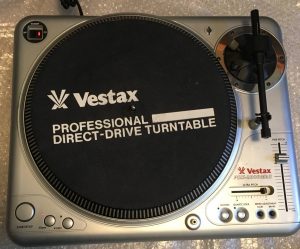


![Top DJ software for Live Performances and Gigs [2023]](/assets/images/e3802ce366623687d91ac7df2186a9ea.png)
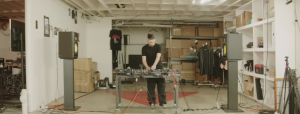
![Top DJ Software and Music Streaming Alternatives to Spotify [2023]](/assets/images/fc2e59c678a10fda46c5367c3f077ed4.png)







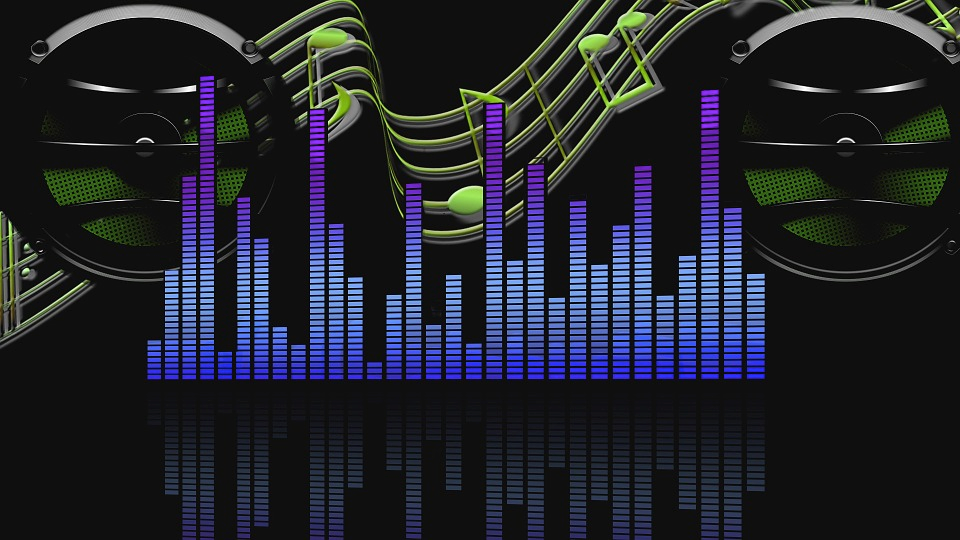

![Top DJ Software and Music Streaming Alternatives to Spotify [2023]](/assets/images/78523423627228ce1b9cdcc4d9b2a79b.png)
